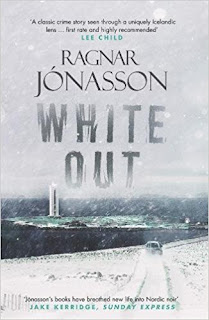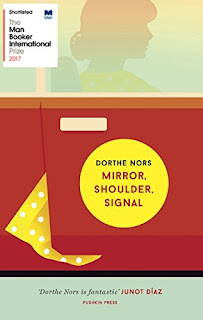A Wikipedia to the Winter
Like many people, I suspect, the pre Christmas tendency for post work drinks seriously curtailed my ability to spill the ink on any of the great titles I read throughout December. Don't get me wrong, I continued to read but just couldn't squeeze any time to sit down and review. Needless to say, some time off between Christmas and New Year could not have come sooner.
Winter is the second in a quartet of books conceived as a personal encyclopaedia about the world, written by a father to his unborn child. I previously reviewed Autumn back in October and decided then that I'd read the next instalments as soon as they were published, and here I am.
The book includes some 60 prose pieces covering everything from 'The Moon' to 'Windows' via 'Toothbrushes' and 'Buses'. Each section is little more than a daily musing but together the sections form a wikipedia of the Winter through the eyes of a brilliant writer, a hygge-pedia if you like. Whilst publishers everywhere rush to capitalise on the trend for all things hygge Knausgaard produces a work that offers an authentic slice of warming Nordic honesty and realism.
Nestled between riffs on 'Atoms' and 'Sugar' is a section concerning Loki "one of the most significant figures in Norse mythology" which adds a drama perhaps missing from Autumn. Knausgaard argues that since earthquakes still occur "our present time must be after Baldr's death but before Ragnarok". The epic continues when Knausgaard compares a bus conductor to the legendary author of The Iliad "always calm, always confident, this king of fiction, this Homer of coins".
New for Winter is a collaboration with Swedish watercolourist Lars Lerin whose illustrations appear before each chapter. Like Knausgaard, Lerin choses subject matter which captures the magical Scandinavian Winter, such as the frozen lake before 'February', with a nod to the beauty of the everyday with the painting of the roadside diner before 'December'.
Lerin's work, when showed at the Nordiska Akvarellmuseet (North of Gothenburg), was said to "embrace both sadness and warmth, melancholia and warmth" which strikes me as the ideal paring with Knausgaard's writing which always values truth over gloss.
Winter by Karl Ove Knausgaard with illustrations by Lars Lerin published by Harvill Secker, 254 pages.
Agree with my review? Comment and share to join the discussion #readmorebooks
Agree with my review? Comment and share to join the discussion #readmorebooks



















